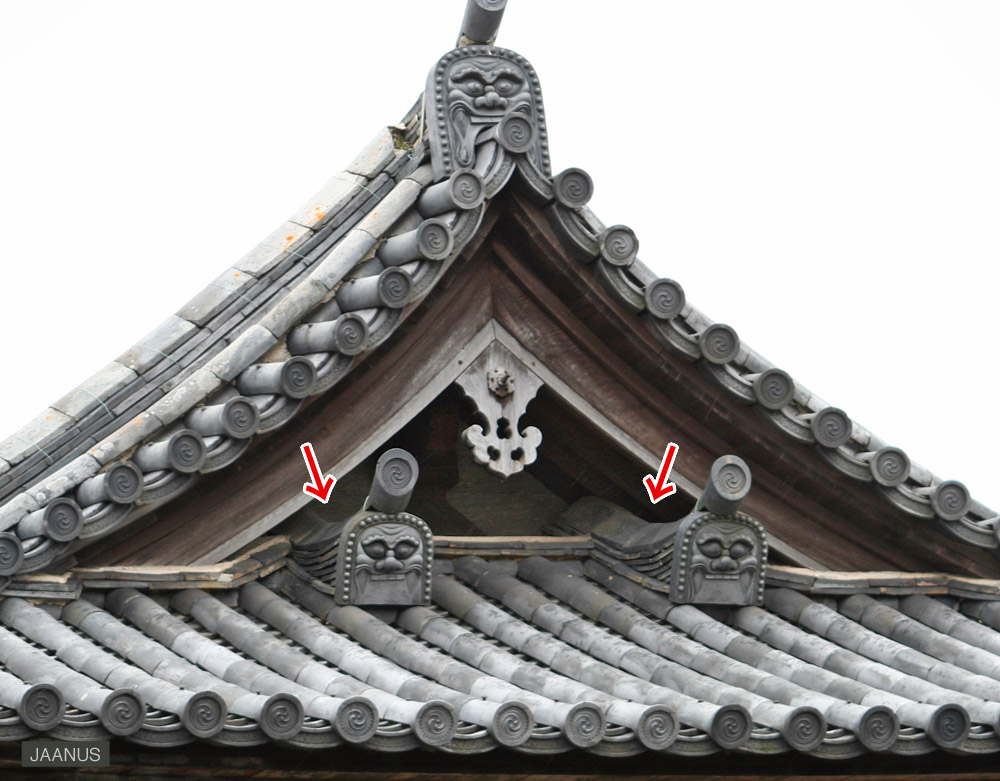| Also shortened to tsumakudari È~; also called
hafu kudarimune j~ or shortened to hafukudari j~. Two ridge-like
structural elements that extend from the base of the gable pediment *tsuma
È and slope down toward the eaves *noki
¬, according to the patch of the hip-and-gable roof *irimoya
yane üê®®ª. These ridges have a bargeboard *hafu
j, on each side and terminate beyond the ends of these bargeboards. They are
made of stacked layers of flat tiles *noshigawara
àl¢, crowned at the top with coping tiles *fusumagawara
Ô¢, and finished at the outer ends with ogre tiles *onigawara
S¢, and bird perch tiles *toribusuma
GåÎ. These ridges, which are decorative rather than structural, became commonly
used after the 13c. |



